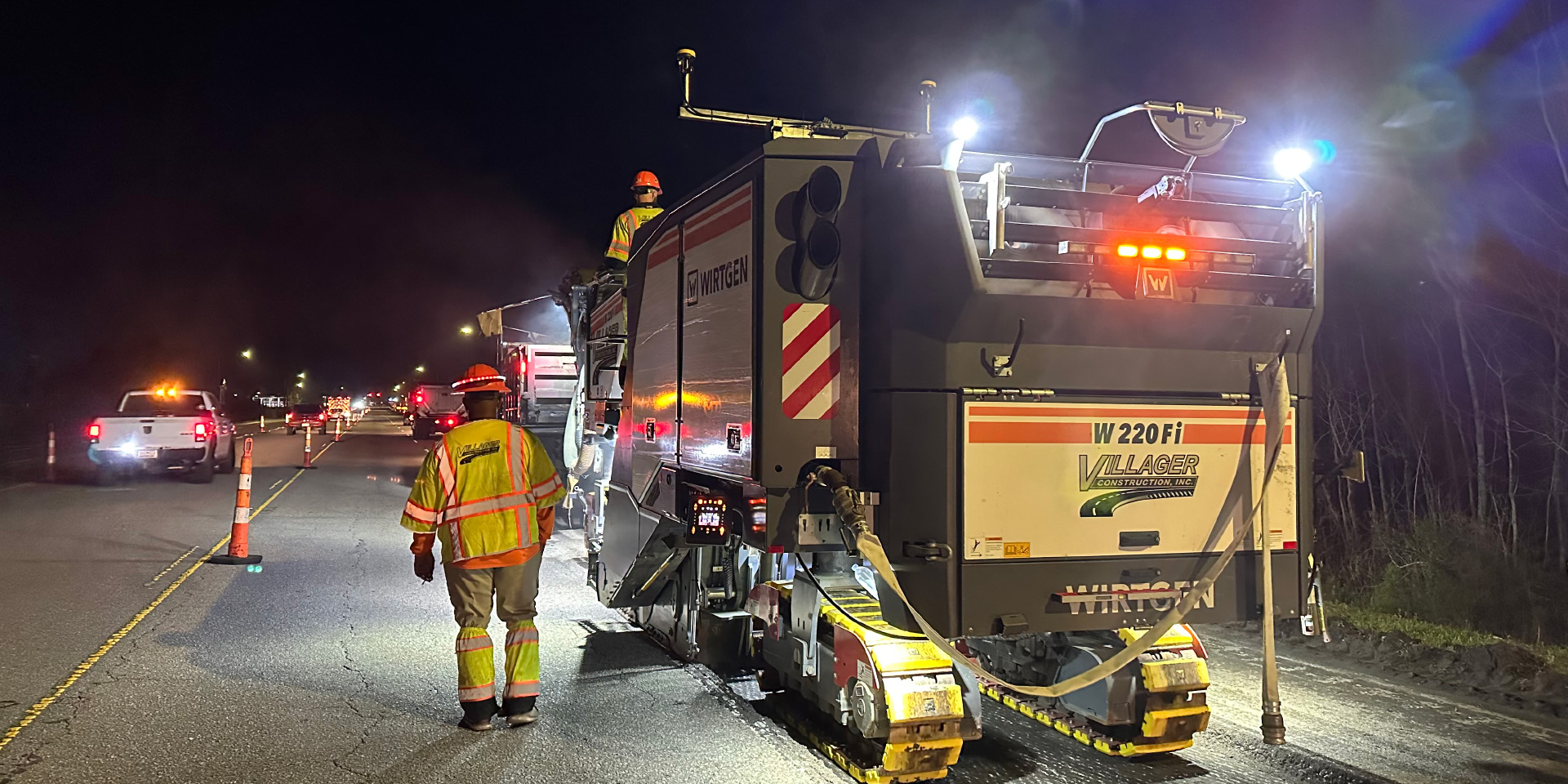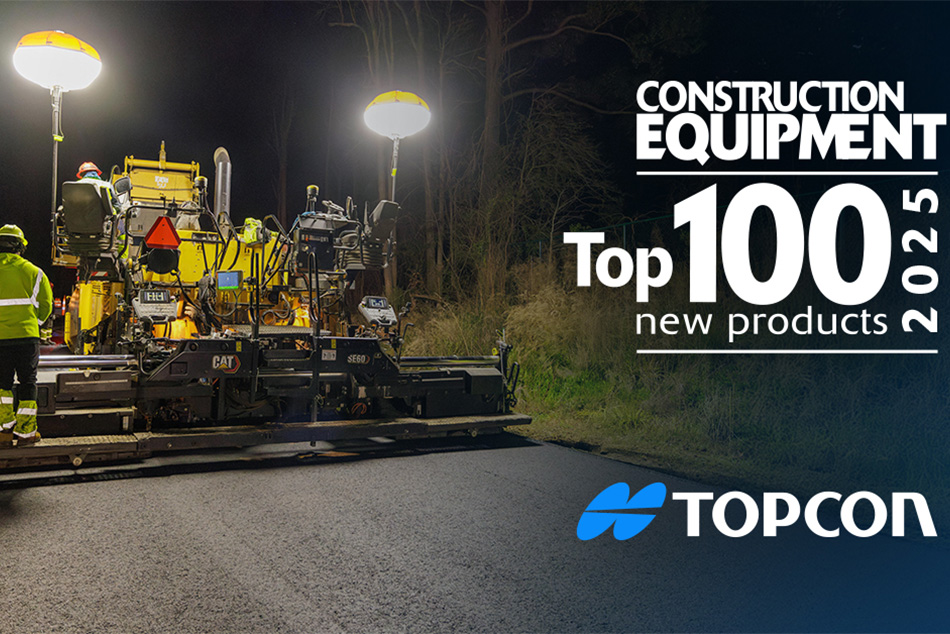Banks Construction is no stranger to recognition for its paving excellence. The Charleston, South Carolina company is a regular presence on the South Carolina Asphalt Paving Association’s (SCAPA) list of award-winning projects and is one of the region’s most in-demand asphalt paving specialists. However, when it was recently lauded for its 2023 performance on a major interstate resurfacing project, it felt particularly good for them, more for the sense of accomplishment it represented than for the accolades. On that project, Banks, never one to balk at new technology, utilized a paving solution that is touted as being “intelligent.” With some key team members somewhat skeptical at the outset, the company nevertheless put the solution to the test on one of Charleston, S.C.’s highest-profile thoroughfares. By project’s end, they became a true believer in the new paving approach, shared some impressive benefits in cost savings, saw undeniable safety enhancements — oh, and won an award to boot. Victorious on so many levels.
History Does Not Repeat
The project cited above was a 32-lane/mile resurfacing that included a series of seven bridges and took place on an 8-mile portion of the heavily traveled I-526 loop around Charleston. According to Trey Cox, P.L.S., Banks’s survey manager, even before securing the bid for the job, a serious concern was staring them down.
“We'd done a job similar to this for the DOT a while back and, because of the way we had to do it, it proved a disappointment for everyone involved,” he said. “That was a two-stage milling operation which called for the surface to be milled, then surveyed to get the design needed for correction, then milled again to match that correction. The problem in this part of the country is that, once you mill a surface — even when you micro-mill it — between the moisture and the cold temperatures we can get, the milled surface tends to crumble. That increases the risk of motorist claims, which we always want to avoid. We knew we could not tackle the I-526 job using the same techniques."

The alternative to which Banks turned was a revolutionary solution from Topcon Positioning Systems they’d seen at ConExpo, the triannual construction trade show. Because it would enhance the entire workflow of their asphalt operation, from highway-speed road scanning to variable-depth milling to 3D paving (and more), Banks management felt the solution, called SmoothRide, was the answer they needed.
“We'd done a job similar to this for the DOT a while back and, because of the way we had to do it, it proved a disappointment for everyone involved.”
— Trey Cox
A True Convert

As mentioned, Cox was initially skeptical about the viability of SmoothRide, specifically its ability to provide a profitable result on their project. But Banks management felt it was the right move to make. With their blessing, Cox and his team set to proving it out.
“We had Justin Thompson, one of Topcon’s intelligent paving specialists, come to our office where we talked a bit about the system, used the Topcon RD-M1 to scan a portion of I-26, and set a time for demonstration,” said Cox. “In typical Banks fashion, we did not hold back. We had 25 trucks lined up, two mills and a full paving crew and I said, ‘Alright, let’s see what happens.’ Even though we did a very basic scanning session and job setup — it worked to perfection. At that point, I was all in for the 526 job.”
With that peace of mind, Banks went back to the DOT with a bid number which was now substantially lower because of the savings they knew could be being realized by streamlining the workflow.
“Because the full milling operation can now be done at the same time as the paving, the cost savings are substantial,” said Cox. “You’ve reduced milling time, minimized the need for traffic control trucks, etc. And less time on the interstate reduces our safety exposures. So, we had DOT engineers come down, showed them the technology, and laid out what we planned for the project. One point of contention was that some of the specs called for actual true elevations rather than relative ones. However, with a simple update to SmoothRide’s software, we were able to pull that info directly from either a control file or the Geoide file. They walked away happy knowing they were saving money and we would get the job done quickly.”
“We had Justin Thompson, one of Topcon’s intelligent paving specialists, come to our office where we talked a bit about the system, used the Topcon RD-M1 to scan a portion of I-26, and set a time for demonstration.”
— Trey Cox
Sneak Preview
While Cox values every facet of the SmoothRide process, he finds particular appeal in the scanning aspect of the solution. It is there, he feels, that Banks has found — and will continue to find — the most benefits moving forward.
“SmoothRide provides what the paving industry has been wanting for years and never had: the ability to see what we are going to get into before getting into it,” he said. A company like ours can get a milling job or a slope correction project and survey it, giving us a pretty good idea of what’s needed, but we can never really know exactly what is going to happen until we get out there. This technology changes all that. We were able to go in and, once we set up our parameters — max mill of 4 inches, minimum mill of 1 inch — we could go through the design and see areas where we were either going to be deep or ‘daylighting,’ then modify those areas to fix them. It’s just what we need.”
He added that, while SmoothRide has already proven itself as an outstanding milling and paving solution, that hardly scratches the surface of what can be done.

“With the RD-M1 scanner, which is the initial step in the SmoothRide process, we see a real benefit in scanning roads for as-built information,” he said. “We regularly bid on jobs that were surveyed and designed five or six years ago. Well, in that five or six years, that road's already been overlaid — maybe a couple times — but needs to be resurveyed because the design says, ‘Match Existing.’ Using the RD-M1 to do that, not only does it eliminate the cost of lane closures, it keeps a survey crew out of the road. The safety factor it provides was almost as important in our decision-making process as streamlining the workflow. At Banks, safety cannot be overstated.”
“SmoothRide provides what the paving industry has been wanting for years and never had: the ability to see what we are going to get into before getting into it.”
— Trey Cox
ROI, OMG!

The savings realized through the elimination of one complete milling run on an eight-mile, four-lane, project can be substantial — a fact that was proven out on the I-526 resurfacing. Though exact numbers weren’t readily available, Cox did present some fascinating figures for consideration.
“First and foremost, you have to look at the fact that we cut 20 shifts out of the job by not having to mill ahead of time,” he said. “That’s a significant savings in per/night costs. Being able to gather as-built data while out there rather than at the end of the project was also huge. And there's simply not a way to put a number on the safety and liability. Unlike the project I mentioned earlier, I don’t believe we had a single claim on this job, which is almost unheard of on an Interstate project. All of that together is the reason our owners believe that the SmoothRide solution was well worth the investment.”
“First and foremost, you have to look at the fact that we cut 20 shifts out of the job by not having to mill ahead of time.”
— Trey Cox
The Green Side
Though it’s sometimes easy to overlook, a reduction in the environmental impact that can be realized by streamlining a project’s workflow can be quite compelling. According to Cox, those savings were literally across the board on the I-526 project.
“Each one of the 20 triaxle trucks working for us probably burns 25 gallons of diesel fuel per night — and that was with a shorter discharge run,” he said. “So, that’s easily 10,000 gallons of fuel that wasn’t used — and didn’t create emissions. And I can tell you now that a Wirtgen 220 mill uses its share of diesel as well, which would add to that consumption total. When you can cut days — or shifts — off of a job, the impacts in so many areas can be just staggering."

Banks’s SCAPA award cites that, by the time the I-526 Resurfacing Project was completed in October of 2023, a total of 42,826 tons of asphalt had been placed over the 8-mile span of the project. Its continuation reads like a laundry list of SmoothRide benefits, saying that the Banks Construction team utilized new technology that allowed for all of this to be performed in one operation, resulting in significant savings to the DOT. In addition, it mentions that the scope change significantly reduced the duration of the project and also eliminated any exposure to a milled surface, both of which minimized the overall impact to the traveling public. The final results were an average rideability improvement of approximately 30%.
“What the award doesn’t call it out is the fact that we had to meet some very stringent cross-slope correction specifications — and we did,” said Cox. “I’m extremely proud of the work our team did on the I-526 job and am glad that they were able to share in this award. We, as a company, are also very grateful for the support we get from Randall Brown at Georgia Surveyors Exchange, our Topcon dealer, and can’t say enough about Topcon and the solutions they continue to provide. Performing a job in 300 days — when it was bid for 360 days — significantly enhances the safety of our employees and the traveling public. That’s another reason we've partnered with Topcon for some 16 years now.
“As to who was the real winner of this award though, I’d have to say it was the Charleston-area residents who travel I-526 regularly — or daily. They’ve gotten something they’ve missed for some time now: a truly smooth ride.”
“Each one of the 20 triaxle trucks working for us probably burns 25 gallons of diesel fuel per night — and that was with a shorter discharge run.”
— Trey Cox
Related articles
Get in touch
Thank you! We will be in touch.















